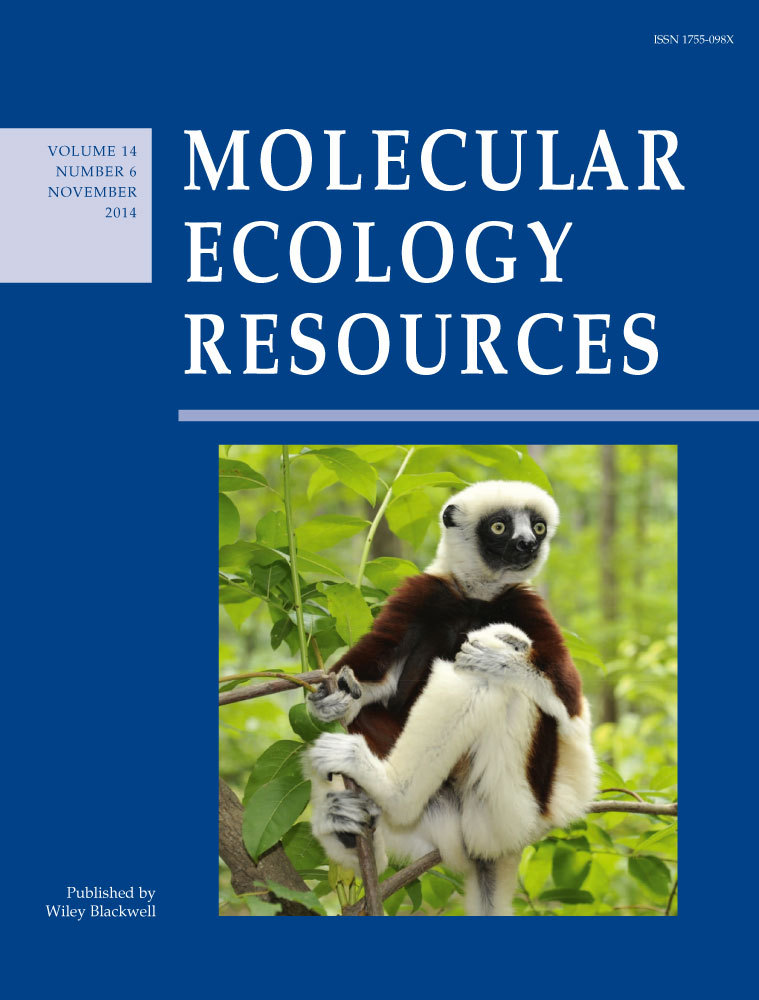Ver ítem
- xmlui.general.dspace_homeCentros Regionales y EEAsCentro Regional Patagonia NorteEEA BarilocheArtículos científicosxmlui.ArtifactBrowser.ItemViewer.trail
- Inicio
- Centros Regionales y EEAs
- Centro Regional Patagonia Norte
- EEA Bariloche
- Artículos científicos
- Ver ítem
Development of genomic resources for Nothofagus species using next‐generation sequencing data
Resumen
Using next‐generation sequencing, we developed the first whole‐genome resources for two hybridizing Nothofagus species of the Patagonian forests that crucially lack genomic data, despite their ecological and industrial value. A de novo assembly strategy combining base quality control and optimization of the putative chloroplast gene map yielded ~32 000 contigs from 43% of the reads produced. With 12.5% of assembled reads, we covered ~96% of the
[ver mas...]
Using next‐generation sequencing, we developed the first whole‐genome resources for two hybridizing Nothofagus species of the Patagonian forests that crucially lack genomic data, despite their ecological and industrial value. A de novo assembly strategy combining base quality control and optimization of the putative chloroplast gene map yielded ~32 000 contigs from 43% of the reads produced. With 12.5% of assembled reads, we covered ~96% of the chloroplast genome and ~70% of the mitochondrial gene content, providing functional and structural annotations for 112 and 52 genes, respectively. Functional annotation was possible on 15% of the contigs, with ~1750 potentially novel nuclear genes identified for Nothofagus species. We estimated that the new resources (13.41 Mb in total) included ~4000 gene regions representing ~6.5% of the expected genic partition of the genome, the remaining contigs potentially being nongenic DNA. A high‐quality single nucleotide polymorphisms resource was developed by comparing various filtering methods, and preliminary results indicate a strong conservation of cpDNA genomes in contrast to numerous exclusive nuclear polymorphisms in both species. Finally, we characterized 2274 potential simple sequence repeat (SSR) loci, designed primers for 769 of them and validated nine of 29 loci in 42 individuals per species. Nothofagus obliqua had more alleles (4.89) on average than N. nervosa (2.89), 8 SSRs were efficient to discriminate species, and three were successfully transferred in three other Nothofagus species. These resources will greatly help for future inferences of demographic, adaptive and hybridizing events in Nothofagus species, and for conserving and managing natural populations.
[Cerrar]

Autor
El Mujtar, Veronica Andrea;
Gallo, Leonardo Ariel;
Lang, T.;
Garnier‐Géré, Pauline;
Fuente
Molecular Ecology Resources 14 (6) : 1281-1295 (November 2014)
Fecha
2014-11
Editorial
Wiley
ISSN
1755-098X
1755-0998
1755-0998
Formato
pdf
Tipo de documento
artículo
Palabras Claves
Derechos de acceso
Restringido
 Excepto donde se diga explicitamente, este item se publica bajo la siguiente descripción: Creative Commons Attribution-NonCommercial-ShareAlike 2.5 Unported (CC BY-NC-SA 2.5)
Excepto donde se diga explicitamente, este item se publica bajo la siguiente descripción: Creative Commons Attribution-NonCommercial-ShareAlike 2.5 Unported (CC BY-NC-SA 2.5)

